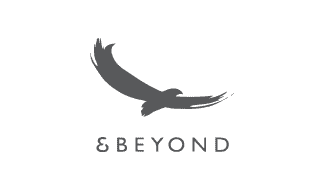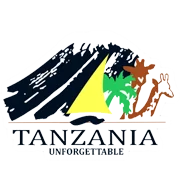- Home
- Our Safaris
- 3 Days Lion Track Tanzania Safari Experience
- 4 Days Zanzibar Beach Holiday
- 4 Days Northern Tanzania Safari Experience
- 4 Days Zanzibar Beach Holiday
- 5 Days The Soul of Africa Safari
- 6 Days Spirit of Tanzania Safari
- 7 Days Big Five Safari Experience
- 8 Days Exclusive Great Migration Safari
- 8 Days Tanzania Northern Cultural Experience
- 9 Days Elite Safari Experience
- 9 Days Sound of Silence Tanzania Safari
- Travel Styles
- Destinations
- Trekking
- Inspiration & Planning
- About Us
- Blog
Mount Kilimanjaro, the highest free-standing mountain in the world, stands as a beacon of adventure, drawing climbers from all corners of the globe. At 5,895 meters (19,341 feet), the Roof of Africa offers a thrilling and life-changing experience for those who dare to reach its summit. Climbing Kilimanjaro is challenging but achievable with the right preparation and guidance. This ultimate guide covers everything you need to know to make your Kilimanjaro climb a success in 2025.
Why Climb Mount Kilimanjaro (How to climb Mount Kilimanjaro)?
Mount Kilimanjaro is unique because it does not require technical climbing skills or mountaineering equipment. It is a trekking peak, meaning almost anyone with good physical fitness, determination, and the right mindset can summit. Along the journey, trekkers pass through five distinct climate zones, from tropical rainforest to arctic summit conditions, making Kilimanjaro one of the most diverse climbs on earth.
More than a physical challenge, Kilimanjaro is a mental and emotional journey that leaves a lasting impact.
Choosing the Right Kilimanjaro Route
Selecting the best route for your climb is crucial for your success and enjoyment. Each route offers different scenery, acclimatization profiles, and levels of difficulty.
| Route | Duration | Difficulty | Highlights |
|---|---|---|---|
| Machame (“Whiskey Route”) | 6-7 days | Moderate | Stunning scenery, good acclimatization |
| Marangu (“Coca-Cola Route”) | 5-6 days | Moderate | Huts instead of tents |
| Lemosho | 7-8 days | Easier | Remote, beautiful landscapes |
| Rongai | 6-7 days | Moderate | Dry, northern approach |
| Northern Circuit | 8-9 days | Easier | Longest route, excellent acclimatization |
| Umbwe | 5-6 days | Very Difficult | Steepest and fastest route |
For first-timers, the Machame and Lemosho routes are highly recommended because they offer gradual acclimatization and breathtaking views.
Best Time to Climb Kilimanjaro
Timing your climb can make a significant difference in weather conditions and your overall experience. The two main dry seasons are:
January to March: Quieter trails, slightly colder.
June to October: Peak season with clear skies and warmer temperatures during the day.
Avoid the rainy seasons (April-May and November), when trails become muddy and visibility is poor.
How Fit Do You Need to Be?
Climbing Kilimanjaro requires strong cardiovascular fitness, endurance, and mental resilience. While technical climbing skills are not necessary, the hike is physically demanding, especially at high altitudes.
Recommended training includes:
Regular long hikes carrying a backpack
Cardiovascular exercises such as running, cycling, or swimming
Strength training for legs and core muscles
Stair climbing and endurance workouts
Consistency and gradual progression are the keys to effective preparation.
What to Pack for Kilimanjaro
Packing correctly is essential for safety and comfort. Essential items include:
Waterproof hiking boots
Thermal base layers
Fleece and insulated jackets
Waterproof and windproof outer layers
Warm hat, gloves, and scarf or neck gaiter
Trekking poles
Headlamp with extra batteries
Water bottles and/or hydration system
High-SPF sunscreen and lip balm
Sunglasses with UV protection
Personal first aid kit with altitude medication
Remember: the temperatures range from hot in the rainforest to freezing at the summit. Layering is key to regulating body temperature.
Altitude Sickness: The Biggest Challenge
Altitude sickness, or Acute Mountain Sickness (AMS), can affect anyone, regardless of age or fitness. Symptoms include headaches, nausea, dizziness, and shortness of breath.
To minimize risks:
Choose a longer itinerary to allow better acclimatization
Ascend slowly and follow the “pole pole” (slowly, slowly) mantra
Stay well-hydrated
Eat enough even when appetite decreases
Listen carefully to your body and your guides
In severe cases, immediate descent is necessary for safety.
How Much Does It Cost to Climb Kilimanjaro?
Climbing Kilimanjaro typically costs between $2,000 and $4,000. Prices vary based on the route, number of days, size of the group, and level of service.
Your costs will usually cover:
Park fees
Camping and equipment
Guides, cooks, and porters
Meals during the trek
Transport to and from the trailhead
Beware of extremely cheap options, as they may compromise safety, equipment quality, or ethical treatment of porters.
Final Tips for a Successful Climb
Train consistently for at least three months before your climb.
Choose a reputable tour operator with experienced guides.
Opt for longer routes for better acclimatization and higher summit success rates.
Stay positive and focus on one step at a time.
Respect the mountain and listen to your guides at all times.
Summiting Kilimanjaro is not just about physical strength; it is about patience, perseverance, and spirit. When you reach the top, the sense of achievement will be unlike anything you have ever experienced.
FAQ About Climbing Mount Kilimanjaro
How long does it take to climb Mount Kilimanjaro?
Most climbs take between 5 to 9 days, depending on the route and itinerary.
Do I need technical climbing experience to summit Kilimanjaro?
No. Kilimanjaro is a trekking mountain and does not require technical skills or equipment.
What is the success rate for reaching the summit?
Success rates range from 50-60% on shorter routes to 85-95% on longer routes with better acclimatization schedules.
What are the main risks when climbing Kilimanjaro?
Altitude sickness is the primary risk. Proper acclimatization, hydration, and pacing are critical to minimize this risk.
Can children or older adults climb Kilimanjaro?
Yes. With proper preparation and medical clearance, climbers as young as 7 and over 70 have successfully reached the summit.
Do I need travel insurance for Kilimanjaro?
Yes. It is highly recommended to have insurance covering high-altitude trekking (up to 6,000 meters) and emergency evacuation.
Post Category:
Ready to stand on the Roof of Africa?
Conquer Mount Kilimanjaro – Your Epic Adventure Awaits!
Embark on the journey of a lifetime as you climb Mount Kilimanjaro — the world’s tallest free-standing mountain! Whether you’re chasing a bucket list dream or seeking a life-changing challenge, this adventure will leave you breathless in the best way possible.
The 6 Days Marangu Route is your gateway to the summit of Africa’s highest peak — with cozy mountain huts, scenic rainforest trails, and unforgettable sunrises over the clouds.
- Best Time to Visit:
- All Year Around
- from $2,159 per person
- 6 Days 5 Nights
7 Days Machame Route offers thrilling visually stunning path to the summit of Kilimanjaro. From lush rainforests to dramatic ridge-lines & glaciers every step is pure magic.
- Best Time to Visit:
- All Year Around
- from $2,473 per person
- 7 Days 6 Nights
The 8 Days Lemosho Route is your golden ticket to summit success — offering unmatched beauty, fewer crowds, and the best acclimatization profile of all routes.
- Best Time to Visit:
- All Year Around
- from $2,670 per person
- 8 Days 7 Nights
The 7 Days Rongai Route is your off-the-beaten-path adventure — offering serene wilderness, sweeping views, and a unique approach to the summit from the north.
- Best Time to Visit:
- All Year Around
- from $2,544 per person
- 7 Days 6 Nights
Don’t just dream it. Do it. Kilimanjaro is calling — will you answer?
EXCELLENTVerified A superb safari! We spent a week of safari with Pastory, very friendly , very attentive , very cultivated on the fauna and flora , he will also take you as close as possible to the animals , in addition to being very good driver , he has a lot of humor and speaks very well French , we highly recommend you , this safari will remain one of our most beautiful trips thank you PastoryPosted onVerified Amazing safari! Amazing week spent with Pastory! A very nice guide who made us discover the different parks of Tanzania and spots great animals!Posted onVerified Fantastic!! Thank you Pastori!! We just had a wonderful time living in this beautiful country. Many thanks to Pastori our guide during these 3 days. It is so simple to talk with him, he transmits his passion for fauna and flora.Don't hesitate! Go ahead!Posted onVerified Safari Tanzania Great adventure! Total change of scenery and Pastori, in addition to being charismatic, knows perfectly how to meet all our demands. Everything was perfect on this safari.Posted onVerified Authenticity and sharing An unforgettable experience 🤩 with an authentic and friendly guide with the people he accompanies and lovers of animals. Pastory introduced us to Tanzania, its colors, values, landscapes, treasures, with its humane look. A big thank you to him 🙏Posted onVerified Fabulous Exceptional trip. It's really the trip of a lifetime.Landscapes, animals, the kindness of Tanzanians.We will keep all these beautiful moments for life. And our Pastory guide has a lot to do with it. An exceptional man with a poignant background. He is patient, kind, ultra efficient in the search for animals, full of humor and above all he gives real explanations to our questions. Thanks again for everything and full of happiness to you.Posted onVerified An excellent Francophone guide Pastory is a very professional and really friendly Francophone guide. He is very familiar with Tanzanian wildlife and culture. It drives smoothly and safely. I can only recommend it to discover Tanzanian parks.Posted onVerified Unforgettable week of safaris We spent a week on safaris in Tanzania and have a wonderful memory of it. We were accompanied by a remarkable Francophone Guide, Pastori, who enchanted our days with his skills, knowledge, patience... and his eagle’s eye view to spot the animals in the three parks visits.He also took us back to Kilimanjaro airport.We recommend Pastori to 300% and thank him again warmly for all the extraordinary times spent with him.Posted onVerified The Best (and Friendliest) Guide to Tanzania We had an unforgettable time for our honeymoon in the most beautiful Tanzanian nature reserves and accompanied by the best Francophone Guide! Always smiling and listening to your desires Pastori knows by heart the animals of the savannah and knows how to orient us without difficulty to see them! Memories that will remain etched in our memories in addition to that of our camera!Posted onVerified Northern Safari Tanzania Best French Guide in Tanzania. Pastori allowed us to see unexpected things. Always listening and smiling. Very good vehicle without worries. Recommended absolutely.
Made to measure
We are Experience & Vacation Designers
Our team of highly experienced travel designers will guide you from beginning to end as you embark on a tailor-made journey of distinction, enjoying truly exclusive and authentic cultural experiences.
We can fulfill your bucket-list dreams, let get in touch.
Our guides are highly experienced, knowledgeable about wildlife and culture, and passionate about delivering the best safari experience. They are also trained in safety and hospitality to ensure an unforgettable adventure.
The best time depends on what you want to experience Tanzania. The dry season (June to October) is ideal for wildlife viewing, while the green season (November to May) offers lush landscapes and fewer crowds.
Absolutely! We offer flexible itineraries that allow you to extend your trip or tailor it to include additional destinations, activities, or cultural experiences.
Yes! Our luxury safaris include downtime at comfortable lodges, camps, or resorts where you can unwind, enjoy spa treatments, or relax by the pool between game drives.






